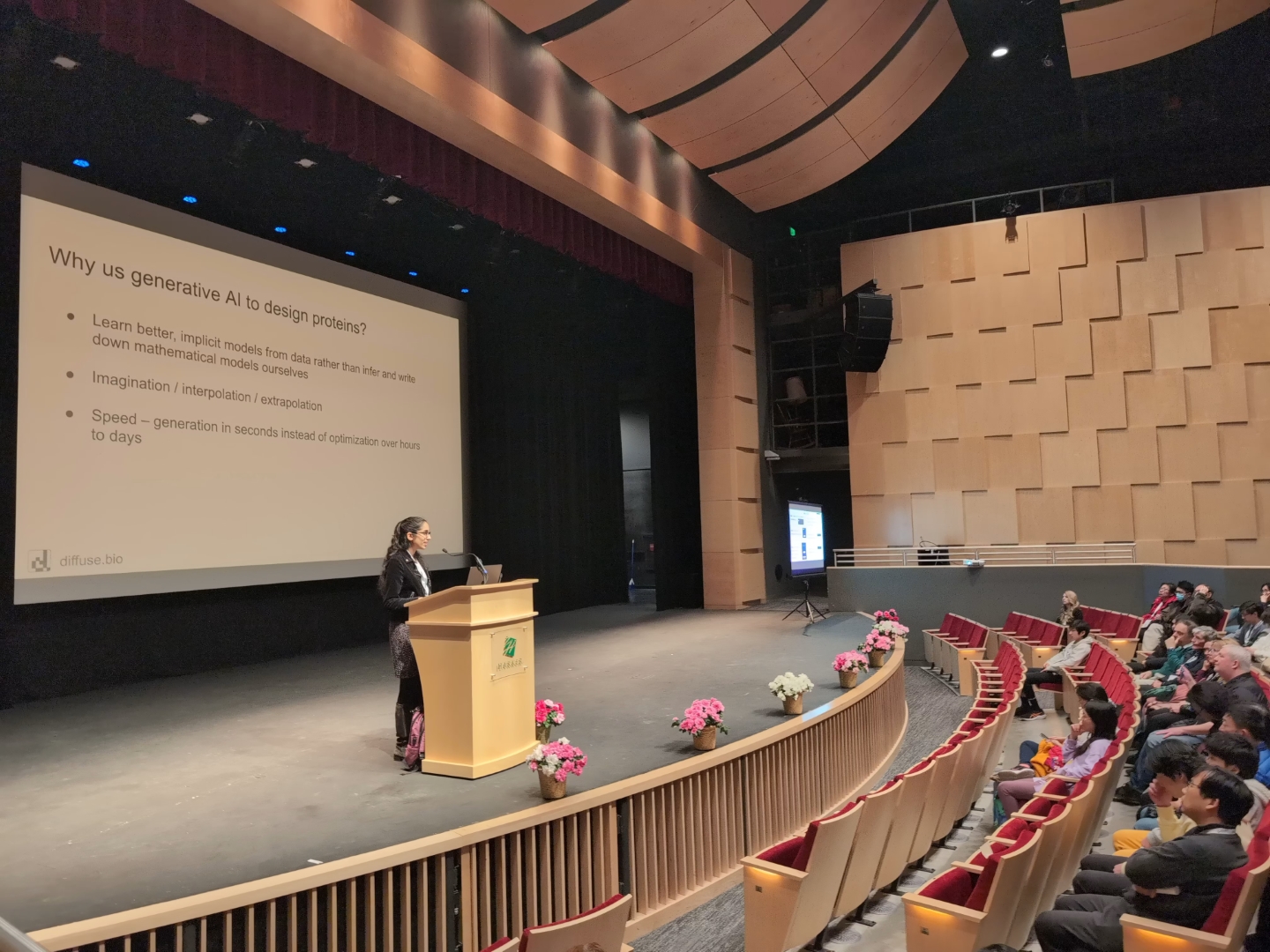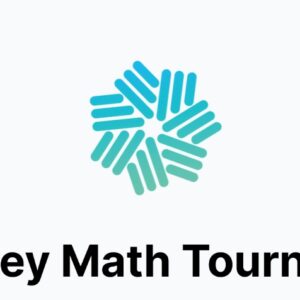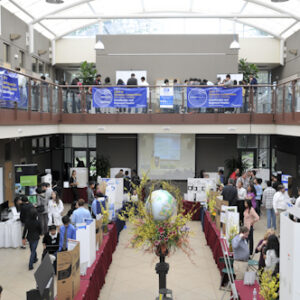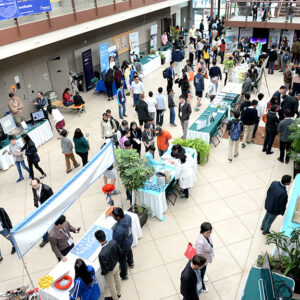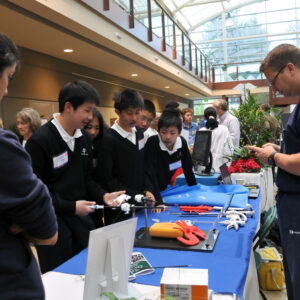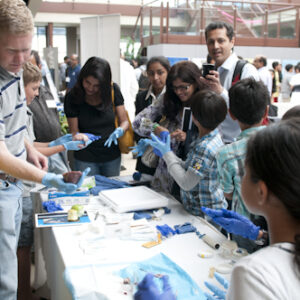For videos of this year’s Research Symposium keynote speakers, as well as selected panels and students presentations, visit Harker’s YouTube channel.
On Sat., April 13, the 2024 Harker Research Symposium, organized by Harker’s Women in STEM (WiSTEM) club, drew 800 guests to the upper school campus, which focused on the rapidly growing field of artificial intelligence and the effect it would have on people’s lives both now and into the future. Morning keynote speaker Xuedong Huang, chief technical officer at Zoom who previously worked at Microsoft as their Azure AI CTO, provided an overview of the development of generative AI over the last few decades, starting with machine translation, which he said has existed for about 40 years. “Now, we have more data, we have more GPUs from Nvidia, we have a lot of people who can label the data, clean the data…. All those things combined, led to GPT-4,” he said. The collection of vast swathes of data over time allowed for the development of so-called “deep learning” models that rose to prominence in the field of machine learning.
Throughout the day, attendees crisscrossed the upper school campus, visiting a large variety exhibits, student talks and other attractions. At the Nichols Hall atrium, corporate exhibitors such as Netflix, LifeCodes, LegalZoom and Google demonstrated their products for excited onlookers. Middle school students gave poster presentations in the auxiliary gym, answering questions from passersby. The STEM Buddies area, set up in the Nichols Hall rotunda, drew younger guests with an array of simple, eye-catching scientific experiments. During lunchtime, people packed the bleachers in the athletic center for the “science magic show,” which consisted of fun and often colorful demonstrations of scientific principles. Elsewhere, upper school students held special workshops to introduce middle and lower school students to the basic principles of AI.
Later, a special panel consisting of Jennifer Gargano, Harker’s assistant head of school, OpenAI’s Alex Iftimie ’03, Fellows Fund founder Alex Reng, Stanford University computer science lecturer Shiva Shivakumar and Harker senior and AI Club president Aniketh Tumala spoke about the opportunities and potential risks of the further proliferation of AI, specifically concerning its use in education. Topics covered included educational integrity, AI’s applications as a learning tool and security issues that may arise as usage increases.
Diffuse Bio found Namrata Anand ’10, this year’s alumni keynote speaker, discussed how she became interested in using AI to advance the field of protein design, which could result in “new therapeutics, new enzymes, new diagnostics, new vaccines,” she said. Despite advancements in protein design, she said, the process is still quite slow and has a less-than-ideal success rate. Deep learning’s potential for designing proteins became apparent to Anand in 2016 as she began her Ph.D. “Why do I need to try to discover a molecule that does gene editing? I should be able to just engineer tat type of molecule from first principles,” she said, outlining her vision for AI-powered protein design. “We’re writing down these complex mathematical models,” she said, later in the talk, “but in other areas, deep learning pretty much obviates the need for some more of this complex, mathematical modeling.”
Between keynote talks, Harker students presented on their own original research during special breakout sessions. These included junior Saanvi Bhargava, who spoke about an AI learning model that could give feedback on vocal performances, sophomore Ariel Zhang’s talk on how machine learning could be used to identify human trafficking victims and a discussion of energy-efficient ways to detect glaucoma that would benefit people in rural areas lacking access to large amounts of energy by sophomore Krish Nachnani.
Dr. Chelsea Finn, computer science professor at Stanford University and the afternoon keynote speaker, presented on the complex challenges and equally complex solutions of training robots to perform everyday human tasks, and how these training methods can work alongside deep learning neural networks to enhance the process. Joining her was one of the robots that she and her colleagues had trained, which she guided through a series of crowd-pleasing tricks. Through extensive use of video examples, Finn described various ways robots learn by both imitation and practice, also known as reinforcement learning. In one example of such learning, she showed a robot practicing how to jump from one table to another after spending time in a simulated environment. “This works well when you can’t demonstrate, and also you can allow the robot to practice in the simulation when it’s unsafe to do so in the real world,” she said.
The day closed with a panel discussion by Harker seniors Arjun Gurjar, Sasha Masson and Arnav Swaroop; juniors Jacqueline Huang and Melody Yin; and Geeta Hiremath, Masson’s mother. Moderated by upper school science teacher Chris Spenner, the panel discussed the range of research opportunities available to Harker students and how the program helps students find their own path in their chosen fields.
